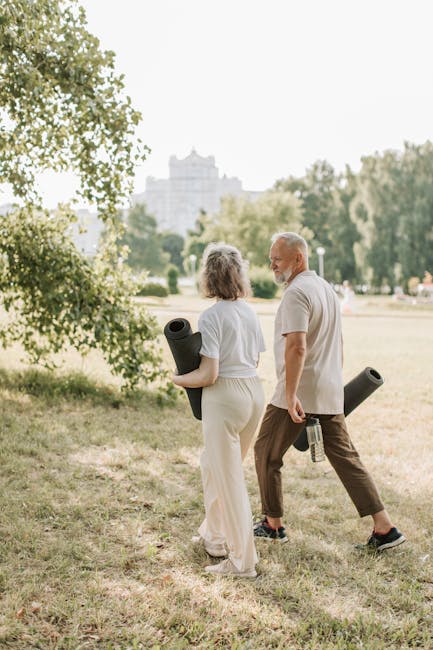
The Fountain of Youth Isn’t a Myth—It’s a Routine
We all dream of a long, vibrant life, filled with energy and free from the aches and pains of aging. We see ads for complex supplements and grueling, high-intensity workouts, assuming the path to longevity is complicated and expensive. But what if the two most powerful tools for extending your healthspan were simple, accessible, and virtually free? Science says they are. Meet your new best friends for a longer life: walking and strength training.
These two forms of exercise are the undisputed champions of healthy aging. They work in perfect harmony to keep your body resilient, your mind sharp, and your years full of life. Forget fad workouts. Here’s how to build a simple, sustainable routine that will pay dividends for decades to come.
Why Walking is Your Daily Dose of Longevity
Walking is humanity’s most primal form of exercise, and its benefits are profound. It’s low-impact, easy to start, and requires nothing more than a good pair of shoes.
- Cardiovascular Champion: Brisk walking strengthens your heart, improves circulation, and helps manage blood pressure and cholesterol levels, significantly cutting your risk of heart disease and stroke.
- Metabolic Master: Regular walks improve how your body uses insulin, lowering your risk of type 2 diabetes. It’s also a fantastic tool for weight management.
- Mental Clarity: A daily walk is a powerful stress-reducer. It boosts mood-enhancing endorphins, clears your head, and has been shown to improve cognitive function and memory.
Why Strength Training is Your Armor Against Aging
If walking is the engine, strength training is the chassis. As we age, we naturally lose muscle mass in a process called sarcopenia. This leads to frailty, a slower metabolism, and an increased risk of falls. Strength training is the single most effective way to fight back.
- Builds a Stronger You: Resistance training builds and maintains muscle, which is metabolically active tissue. More muscle means a higher resting metabolism, making it easier to maintain a healthy weight.
- Bone Density Guardian: Stressing your bones through strength exercises (like squats and lunges) signals your body to build them up, protecting you against osteoporosis.
- Improves Stability and Balance: A strong core, back, and legs are your best defense against falls, a major cause of injury in older adults. Strength training directly improves your balance and functional movement.
How to Build Your Ultimate Longevity Routine
The magic happens when you combine these two powerhouses. Here’s how to create a balanced weekly plan that’s both effective and sustainable.
Your Walking Plan:
The goal is to aim for 150 minutes of moderate-intensity activity per week, and walking is the easiest way to get there.
- Beginner: Start with 15-20 minute walks, 3-4 days a week. Focus on consistency.
- Intermediate: Progress to 30-45 minute brisk walks, 5 days a week. A “brisk” pace means you can still talk, but not sing.
- Pro-Tip: Make it enjoyable! Listen to a podcast, walk with a friend, explore a new park, or try walking on an incline to increase the challenge.
Your Strength Training Plan:
Aim for 2-3 non-consecutive days of strength training per week. You don’t need a gym—your body weight is the perfect starting tool.
Sample Full-Body Routine (perform 2-3 sets of 8-12 reps):
- Bodyweight Squats: The king of lower-body exercises for leg and glute strength.
- Push-ups (on knees or against a wall): Builds upper body and core strength.
- Plank: Excellent for core stability and a strong back. Hold for 20-60 seconds.
- Glute Bridges: Activates your glutes and hamstrings to support your lower back.
- Lunges: Improves balance, stability, and single-leg strength.
Sample Weekly Longevity Schedule
- Monday: Brisk Walk (30 minutes)
- Tuesday: Full-Body Strength Training (20-30 minutes)
- Wednesday: Active Recovery (Gentle walk or stretching for 20 minutes)
- Thursday: Brisk Walk (30-45 minutes)
- Friday: Full-Body Strength Training (20-30 minutes)
- Saturday: Long Walk or Recreational Activity (e.g., hiking, gardening)
- Sunday: Rest
The secret to a long and healthy life isn’t a secret at all. It’s about consistent, intelligent movement. By lacing up your shoes for a daily walk and dedicating a couple of hours a week to getting stronger, you are actively investing in a future that is more vibrant, capable, and full of life. Start today—your future self will thank you for it.
